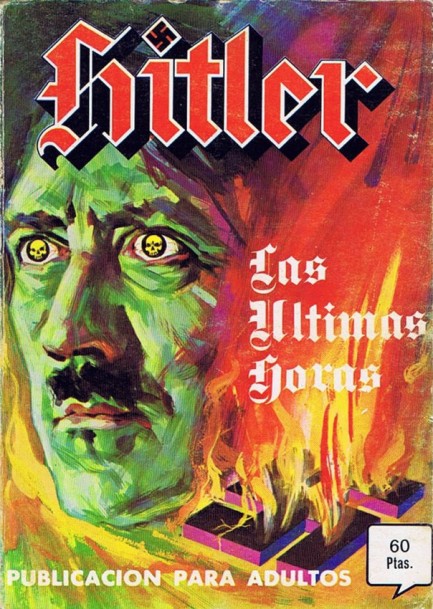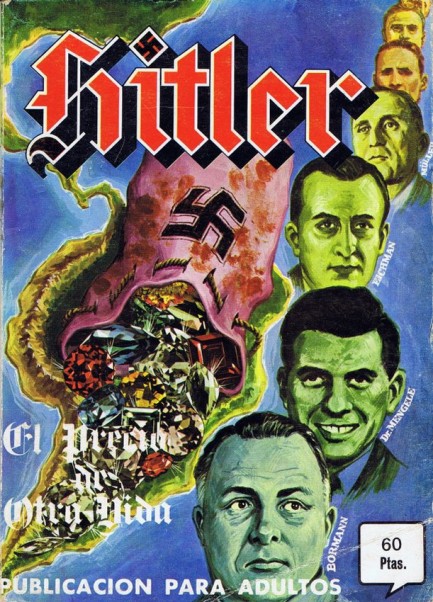 I see a tiny island! If we make it there we can recite captions from classic castaway cartoons until we're rescued! 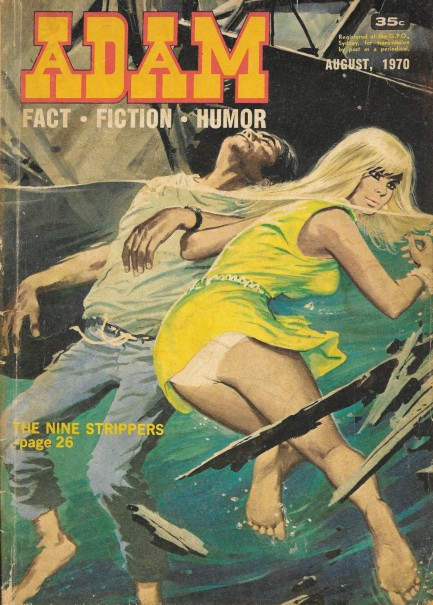
We have another issue of Adam today, with a fun cover illustrating Ron Rawcliffe's story, “The Nine Strippers.” Obviously, with a title like that we had to read it, and it deals with a charter boat captain hired to take nine exotic entertainers upriver into the wilderness under mysterious circumstances, and it turns out they've been hired by an organized crime cabal. When the gathering is raided by federal police the captain must escape intact with bullets flying, strippers fleeing, and mafiosi trying to hijack his boat. Also in this issue of Adam you get fiction by Leonard Calhoun and John P. Gilders, plus a bit of boxing and a lot of models, including German born Israeli actress Helena Ronée just below, and French actress Catherine Rouvel in the feature "She Wins Them All." And circling back to the cover and its two potential castaways, look forward to this: we have another set of castaway cartoons coming up.
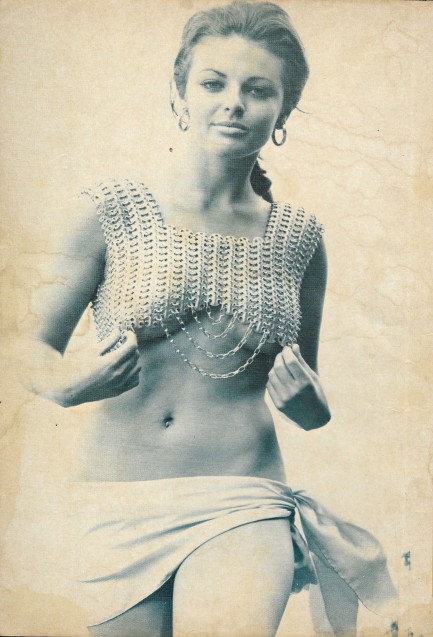 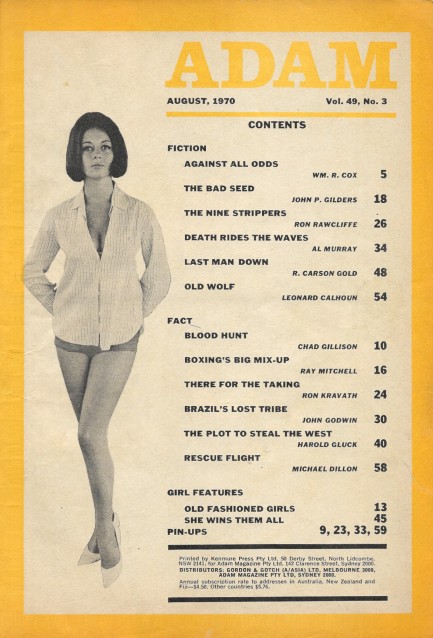 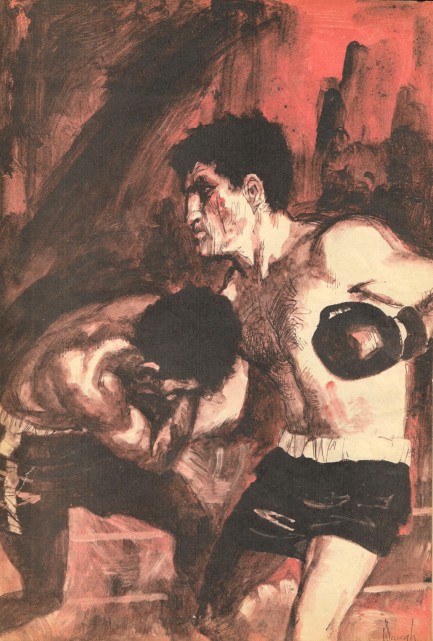 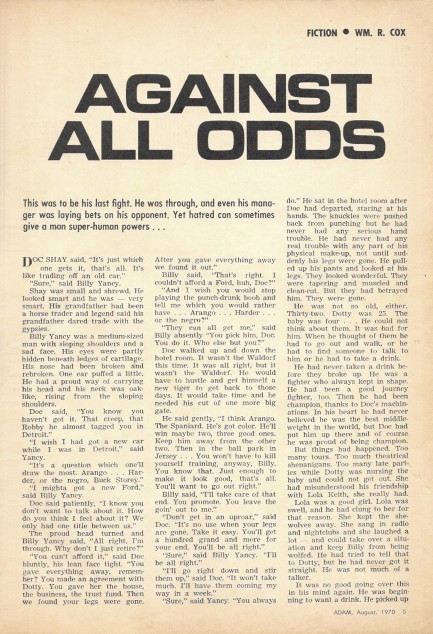 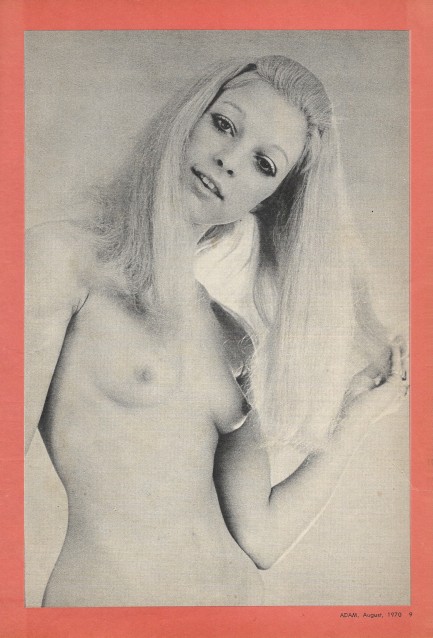 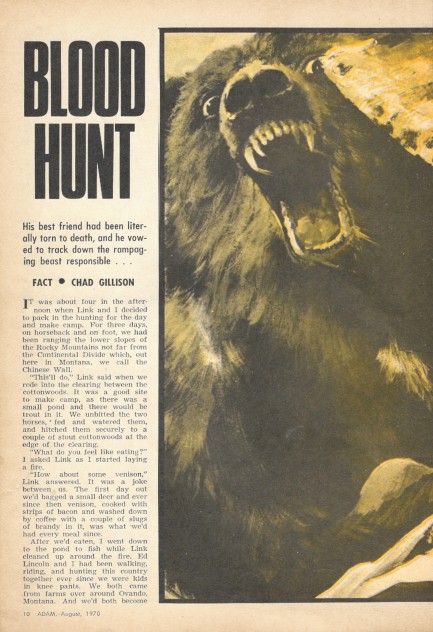 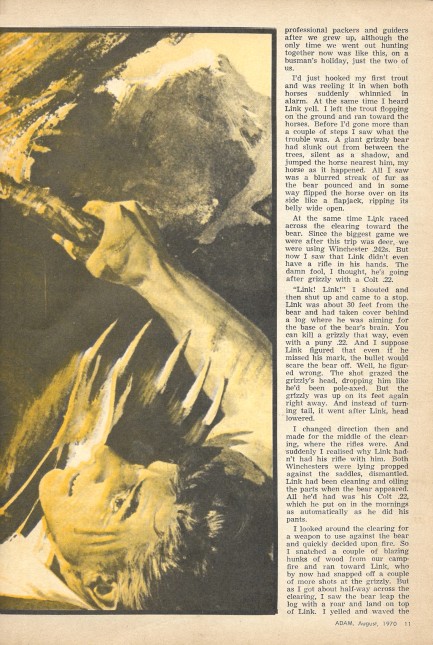 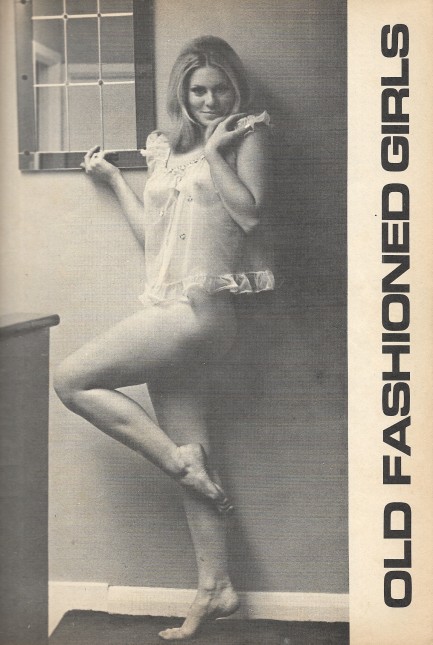 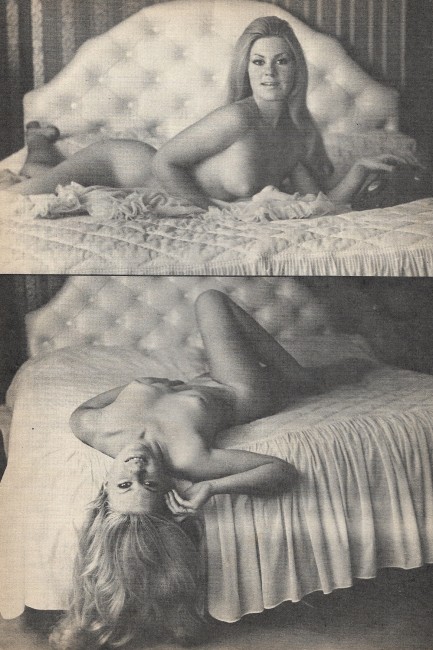 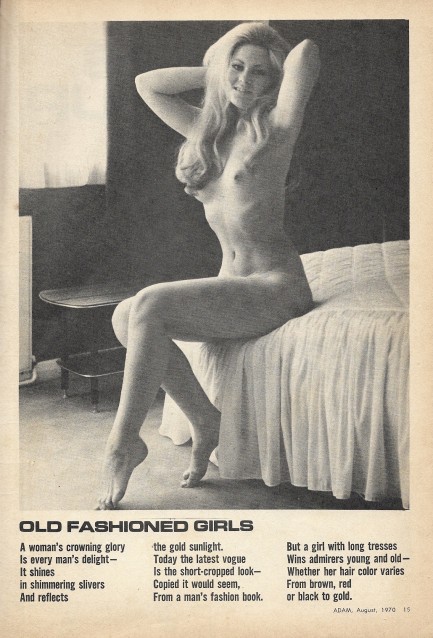 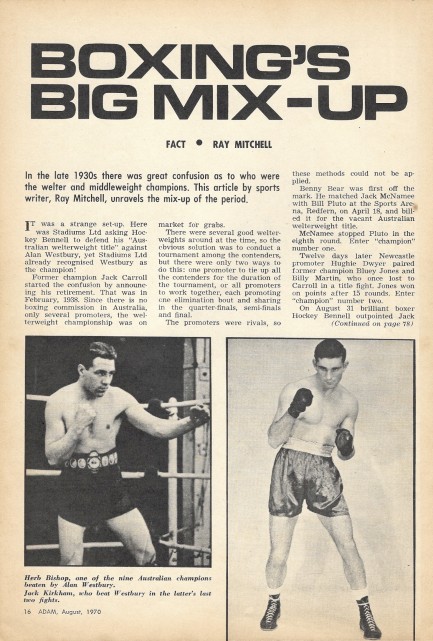 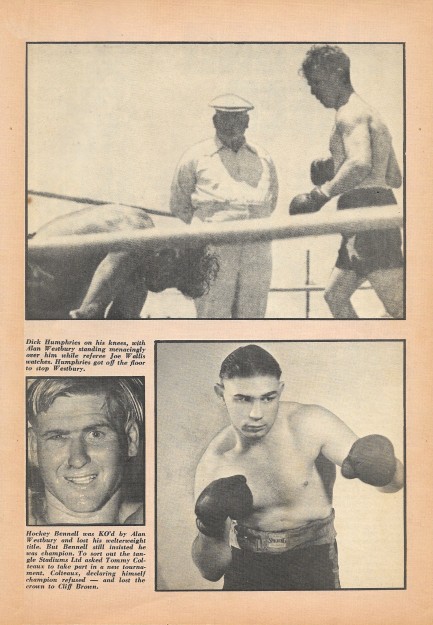 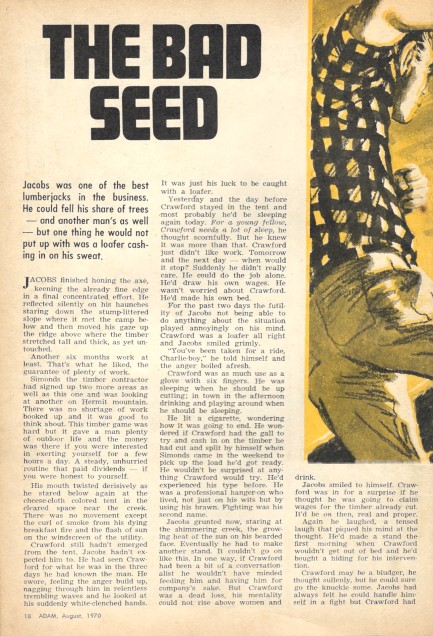 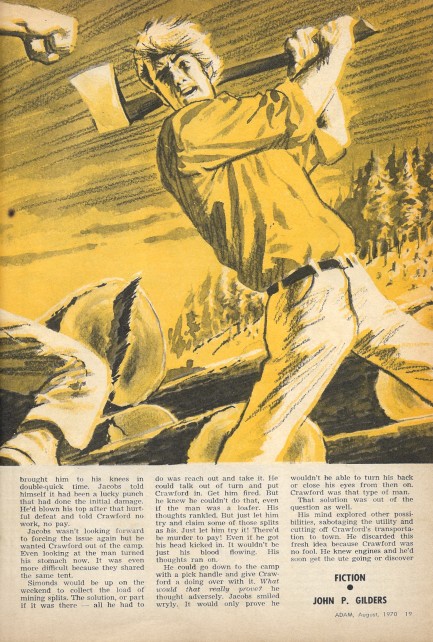 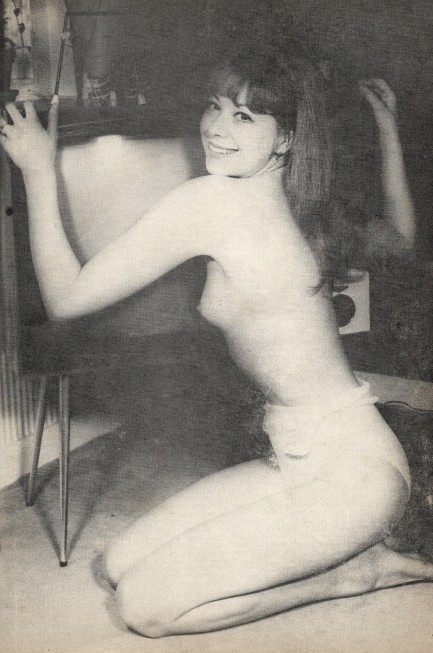 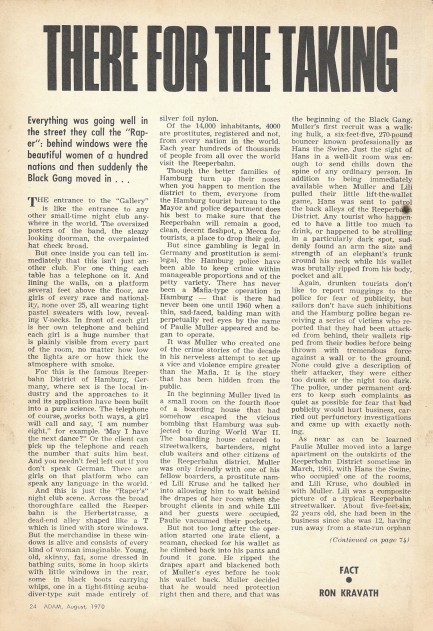 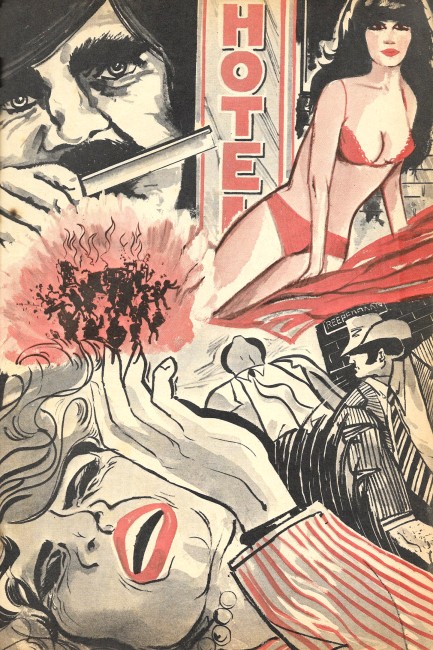 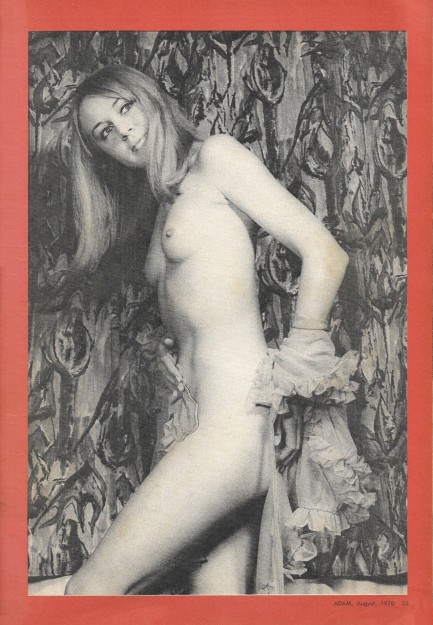 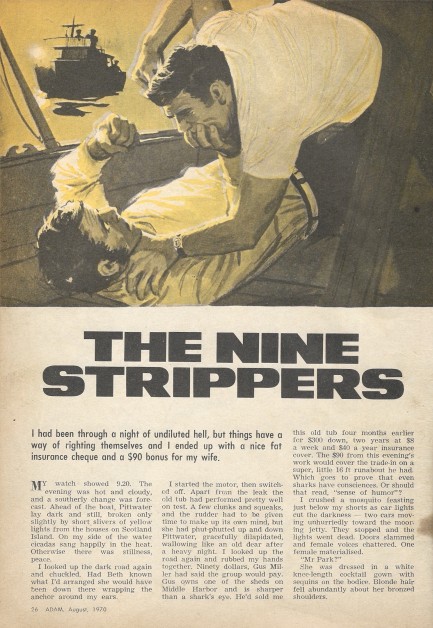 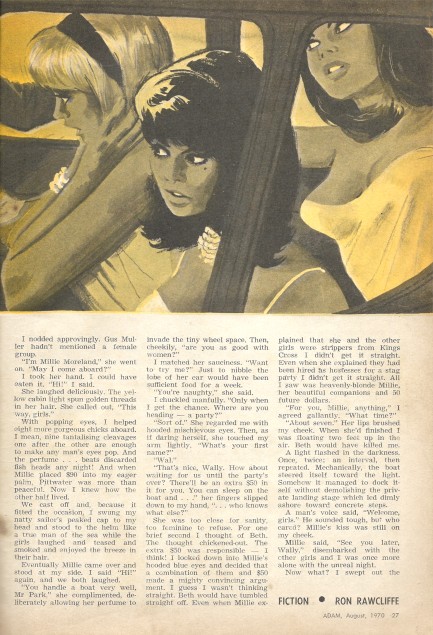   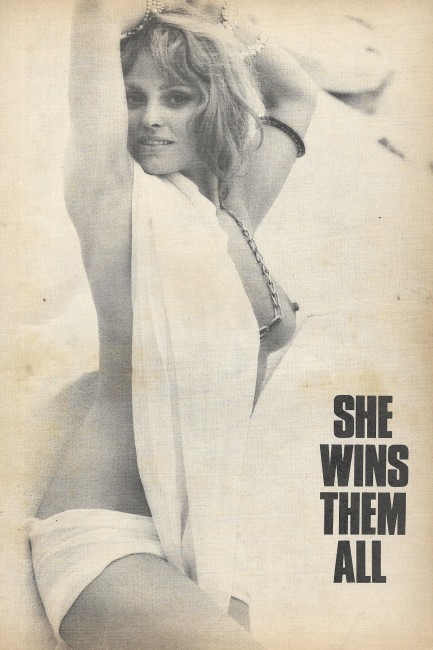  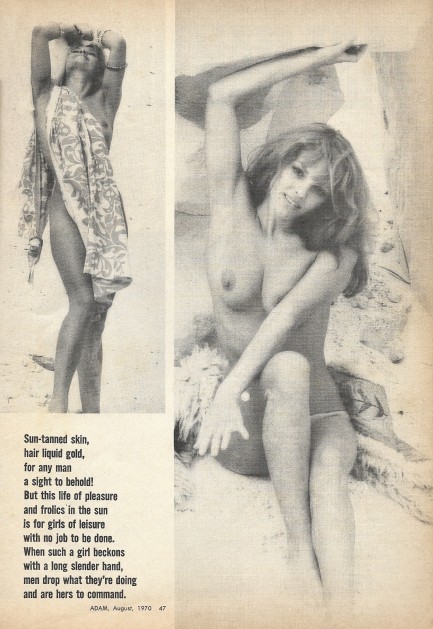 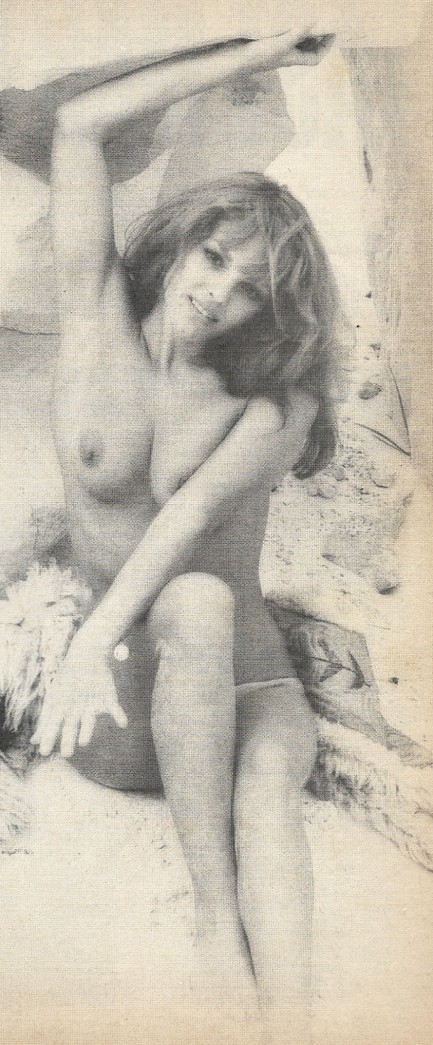  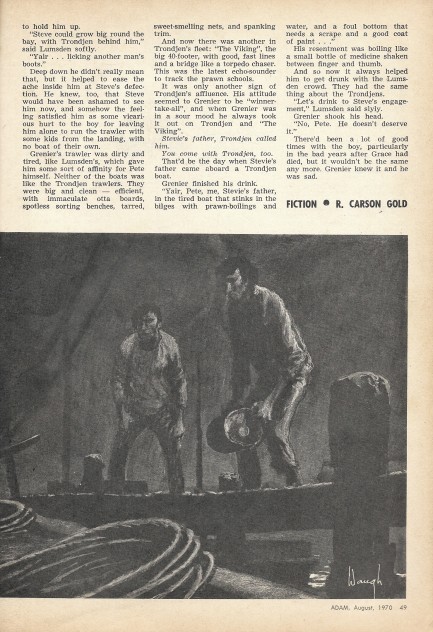 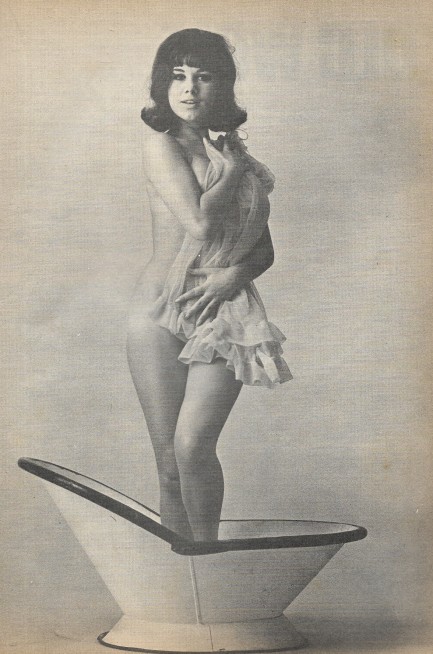 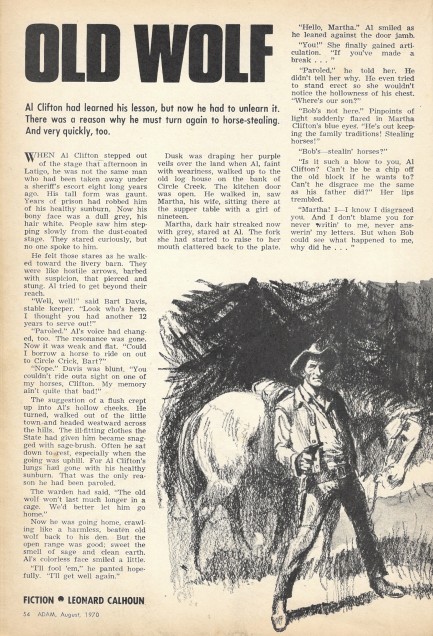 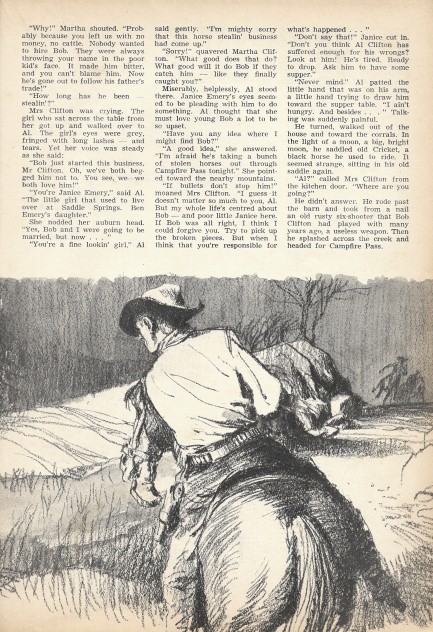  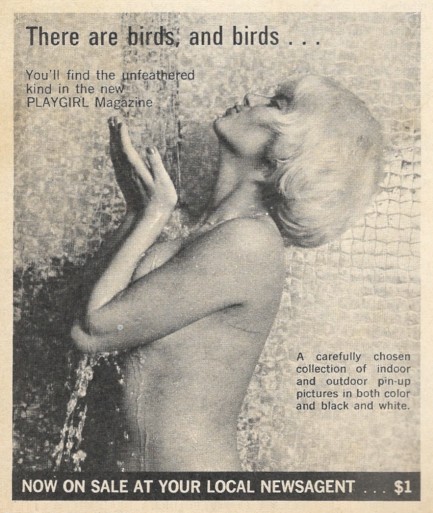 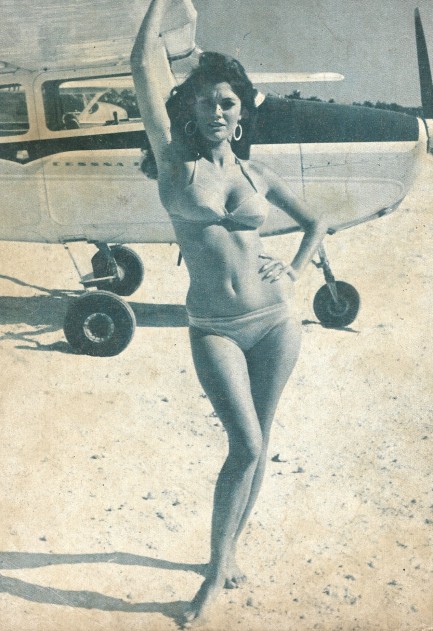
 Charisse strikes a perfect pose on MGM mailer. 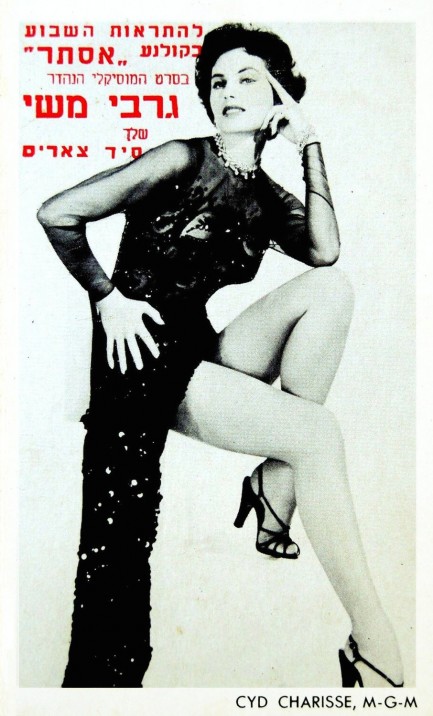
We have something a bit different for you today. We say that every time we have something from Israel, don't we? Well, in our experience items from there are pretty rare. And like our many Japanese discoveries, they're inherently interesting because of the different alphabet used. What you see here is a promotional postcard for the 1957 MGM musical film Silk Stockings, which starred Cyd Charisse and Fred Astaire. It's not a film we'll talk about, as it falls outside our purview, but we love this item, which we spotted on an auction site. It's crudely printed, but beautiful just the same, thanks to Charisse, who was one of the special beauties of her era.
According to the vendor, the text says, “See you this week in the Esther cinema hall in the magnificent musical film, Silk Stockings. Yours, Cyd Charisse.” The Esther was a Bauhaus style cinema built in Tel-Aviv's Dizzengoff Square. It opened in 1931 and was a popular social hub for decades before being closed, then reopened as a fancy hotel. As you know, we're into old cinemas, and we managed to track down a shot of the Esther, which appears below. Consider it an addition to our collection of vintage cinema photos. We don't have an Israeli release date for Silk Stockings, but if we had to guess we'd say it played there in 1958 or 1959.
 The black panther returns. 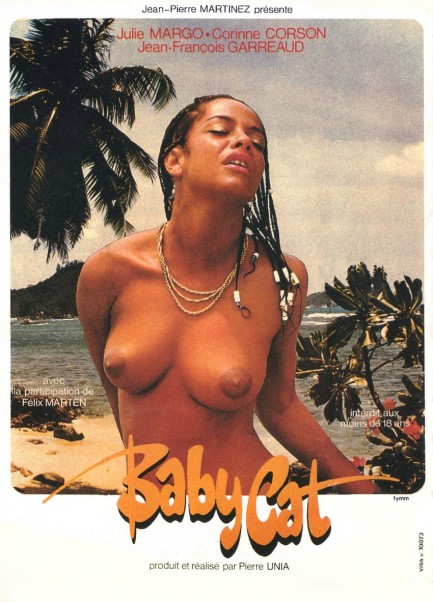
We're back into French sexploitation today with this poster for Baby Cat, which starred Israel born actress Shulamith Lasri, aka Julie Margo. The title, which is what the movie played under in France, is probably meant to be an allusion to the English word “pussy.” If so, the French filmmakers missed their target, since cats of any age can be called pussycats. But we couldn't make an allusion in French under pain of torture, so we'll give them a pass. We watched this only because Margo had aroused our curiosity with her outing in 1976's Emanuelle nera n° 2. She starred in that as Shulamith Lasri, her real name. Most websites haven't made the connection that Lasri and Margo are the same person. IMDB, for instance, has separate profiles for each, and Wikipedia's entry on Emanuelle nera n° 2 (Black Emanuelle 2) expressly states that it was the only film in which Lasri appeared. Well, now the truth is out.
In Baby Cat Lasri/Margo plays a jaded Paris model with two boyfriends—one a hustler, and the other a one percenter. The rich boyfriend won't commit, and we can't imagine why he would, since he's a fashion magazine publisher and hangs out with beautiful women for a living. But this annoys Margo, so she teams up with the hustler to stage a fake kidnapping and try to pry loose a ransom. Unfortunately, her one percenter catches wind of the plot and sticks her in a basement to consider the error of her ways. This accomplished, he flies off for a photo shoot to the French/Dutch island of Saint Martin with a bevy of skinny models (among them Corinne Corson, Eloïse Beaune, and Sylvie Schmidt) who mostly wander around topless in the tropical heat. Having spent some time on Saint Martin, we can tell you that the toplessness brings a touch of reality to the proceedings. We don't see Margo much during this middle stretch of the film, but she'll get loose from that Paris basement soon enough.
Margo isn't classically pretty, but she has a flawless body any woman would sell her soul and everyone else's to have. In Emanuelle nera n° 2 she was referred to as a panther, and amusingly, here four years later a completely different set of filmmakers beat the identical drum with lines like, “Hey, she moves just like a cat. A black panther.” We get it—Margo is exotic as far as European filmmakers are concerned, but any questions about her feline qualities are moot for us, because she can't act. Like, at all. She took a four-year break after Emanuelle nera n° 2, coming back to make three more films, of which Baby Cat is the last. It was probably good she stopped. Hell, it was good this movie stopped. Watching Margo work that body of hers was enjoyable, and the Saint Martin exteriors brought back lovely memories for us, but for you, beloved pulpsters, Baby Cat is a movie you can probably bypass. It premiered in France today in 1983.
    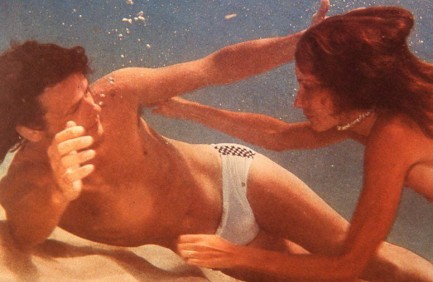  
 I vant to suck your jelly donut! The raspberry filling is irresistible! 
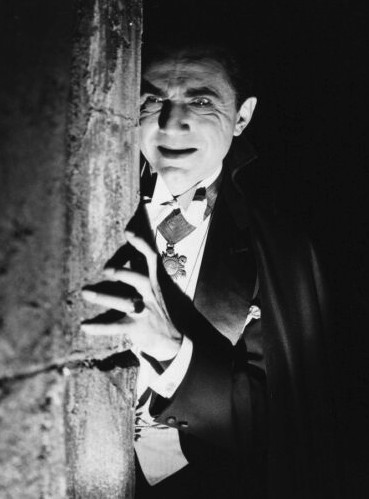 This cool cover fronts the original Hebrew translation of Bram Stoker's Dracula. It looks vintage but it's actually from 1984. It was made from a promo image, as you see, with Bela Lugosi wearing a very hungry expression. Vampires crave blood, but this look must be for something even better, like one of those Israeli jelly donuts—sufganiyot they're called. They'd make anyone modify their diet. Luckily, Dracula wears a cape, which means he won't need a napkin to wipe the powdered sugar off his mouth. Pulp style art from Israel is hard to find, as you can probably imagine. Is this pulp style? We think so, kind of. Anyway, we've located a few things—for example, this cover for Psycho. We'll keep looking and share anything we find. This cool cover fronts the original Hebrew translation of Bram Stoker's Dracula. It looks vintage but it's actually from 1984. It was made from a promo image, as you see, with Bela Lugosi wearing a very hungry expression. Vampires crave blood, but this look must be for something even better, like one of those Israeli jelly donuts—sufganiyot they're called. They'd make anyone modify their diet. Luckily, Dracula wears a cape, which means he won't need a napkin to wipe the powdered sugar off his mouth. Pulp style art from Israel is hard to find, as you can probably imagine. Is this pulp style? We think so, kind of. Anyway, we've located a few things—for example, this cover for Psycho. We'll keep looking and share anything we find.
 You really don't want to wake this guy. 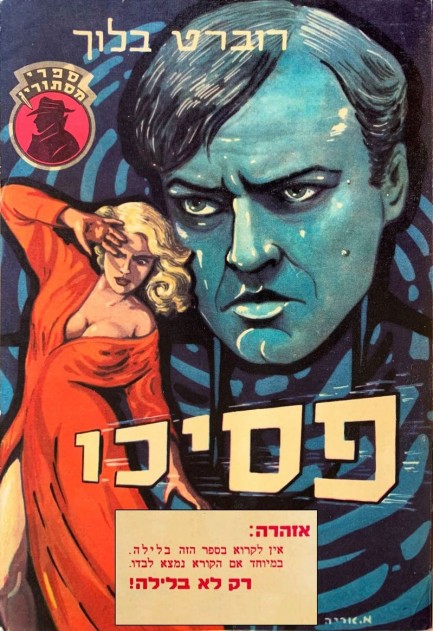
Here's an amazing piece of international pulp, a cover in Yiddish from M. Mizrahi Publishing for Robert Bloch's thriller Psycho. We recently posted a collection of Psycho covers, but we held this one back because it deserved its own moment. This was painted by an artist named Arie Moskowitz, sometimes referred to as M. Arie, who produced several more fronts we may share later. We found this one on Israeli Wikipedia, of all places, where it was posted by the National Library of Israel. It's quite a find. 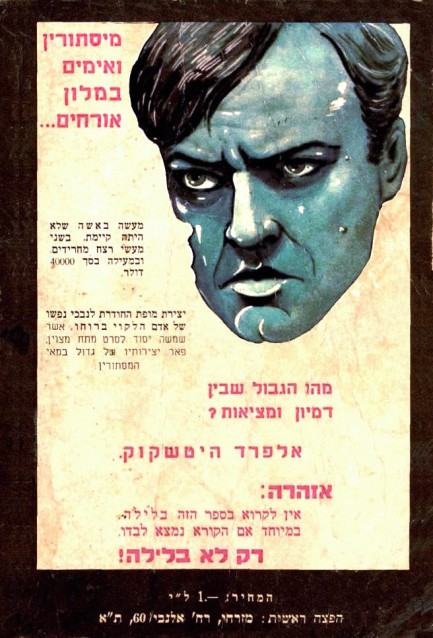
 When she tells someone to sleep well she means forever. 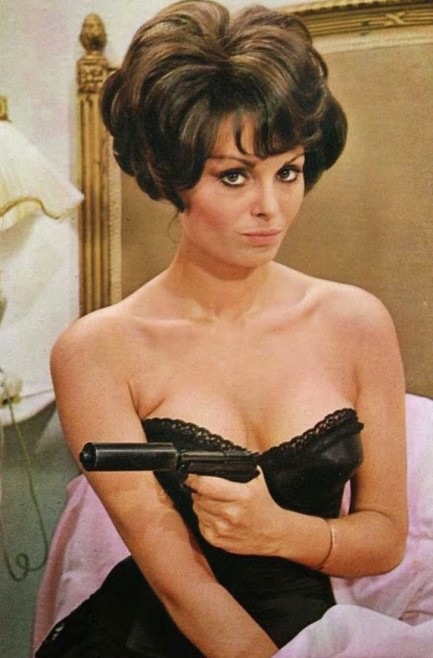
Above, a colorized shot of Israeli actress Daliah Lavi in character as Princess Natasha Romanova in 1966's The Spy with a Cold Nose, which as you can probably guess is about a dog turned into a spy. Silly of course, but this was during the heyday of spy spoofs. In fact, Lavi was in several others—Some Girls Do, Casino Royale, Schüsse im 3/4 Takt, aka Operation Solo, and The Silencers. All were ridiculous. There's nothing ridiculous about Lavi, though. She looks ready to kill in her black lingerie.
 The movie is n° 2 but its star is second to none. 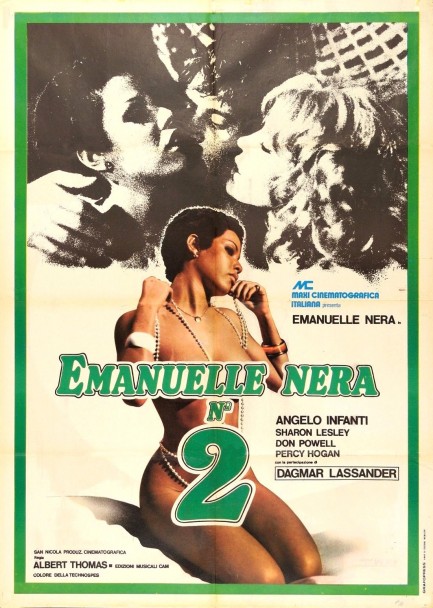
There sure are lots of Emmanuelle/Emanuelle movies out there. Sylvia Kristel, Laura Gemser, Monique Gabrielle, Olinka Hardiman, Krista Allen, Natasja Vermeer, and many others inhabited characters with that name. But we'd never heard of Shulamith Lasri, aka Julie Margo, nor her contribution to the pantheon Emanuelle nera n° 2, aka The New Black Emanuelle. Pulp Intl. abhors a vacuum so we figured what the hell and decided to check the movie out. Plotwise Lasri is a famous model who's had some sort of break with reality and is in a mental institution trying, with the help of doctors, to restore memories that might be the key to her trauma Sounds deadly serious, doesn't it? But like many serious low budget movies, unintentional humor rears its clumsy head. At one point Lasri disrobes and Danielle Ellison gapes at her and says, “Your body. You're like a queen of the night. Or a panther.” At which point Lasri forms a claw with her hand and goes, “Grrrrr...” Frickin' hilarious. The two then dance naked, as women often do when they hang out together. Does Lasri ever get her head straight? Maybe. But even if her mind is cured, her body will remain bonkers, and that's what these movies are all about. Emanuelle nera n° 2 premiered in Italy today in 1976. 
 Sara Montiel and Giancarlo Del Duca get lost in Israel. 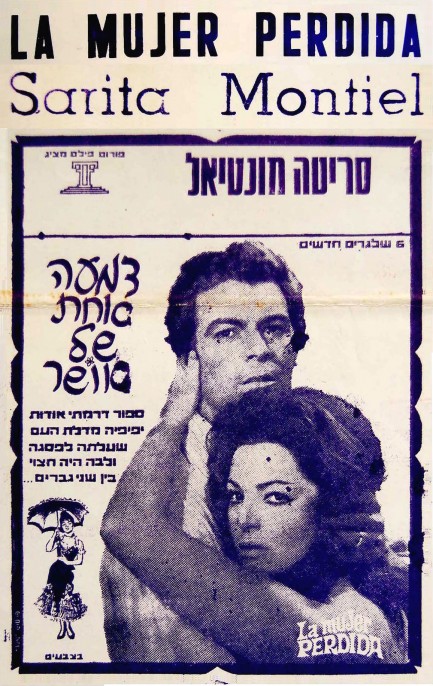
We have something a bit different today, an Israeli poster for the Sara Montiel and Giancarlo Del Duca film La mujer perdida, or The Lost Woman, released in 1966. The art isn't as proficient as most promos from the 1960s, but the crude printing process gives it an ephemeral quality we really like. Below you see the other piece, which was either the flipside or a companion promo, and it gives the premiere date as today in 1969—we think. This is not the first Israeli poster we've found. The other—for Humphrey Bogart's The Enforcer—is here. And we have a few more we'll share later. 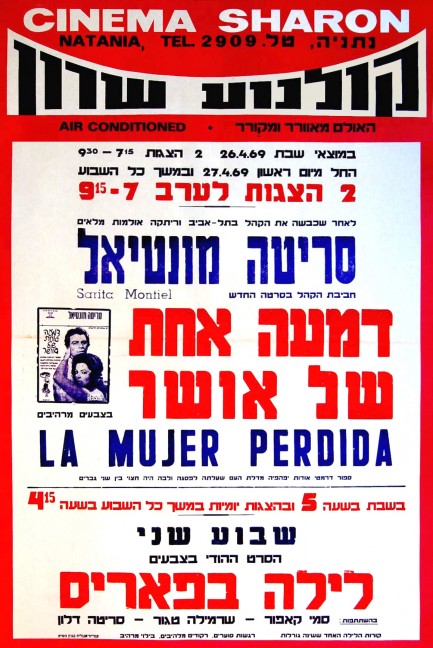
 Section of CIA trove of declassified material reveals research into psychic phenomena. 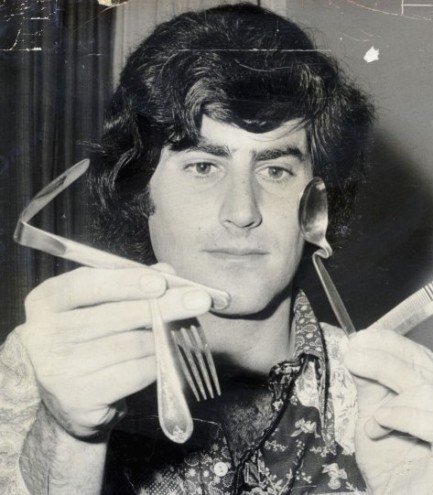
The Central Intelligence Agency has just published 800,000 formerly classified files online. The data dump, comprising some 13 million separate documents, isn't technically new. The files had been declassified years ago, but had only been available at the National Archives in Maryland, on only four computers tucked away at the back of the building which were accessible only during business hours. A freedom-of-information group called MuckRock sued the CIA and forced it to upload the collection, and the process took more than two years. Among the discoveries in the trove are documents related to the Stargate Project, which was tasked with examining psychic phenomena. A subset of those investigations involved celebrity paranormalist Uri Geller in 1973. For those who don't know, Geller is a guy who used to show up on television programs like The Tonight Show and perform various paranormal tricks. His fame drew the roving gaze of the CIA, and they had him come in for a series of tests. No word on whether he had a choice in the matter. The testers ultimately reached the conclusion that Geller was legit, stating in the declassified dox that he had, “demonstrated his paranormal perceptual ability in a convincing and unambiguous manner.” How did they reach that conclusion? Through double blind experiments, one of which involved sealing Geller in a room, having a worker make a drawing, and asking Geller to recreate the drawing without having seen it. The images above and below show three of the original drawings, and Geller's eerily accurate renderings. Through double blind experiments, one of which involved sealing Geller in a room, having a worker make a drawing, and asking Geller to recreate the drawing without having seen it. The images above and below show three of the original drawings, and Geller's eerily accurate renderings. Geller made a nice career for himself finding hidden objects, bending spoons, and reproducing hidden sketches, but the really interesting part is he may have been a spy. In 2013, a BBC documentary titled The Secret Life of Uri Geller–Psychic Spy? claimed Geller worked for the CIA, was recruited by Mossad, and performed such missions as using only the power of his mind to erase floppy discs carried by KGB agents. Geller allegedly spent years in Mexico working as security for President José López Portillo, and the aforementioned documentary suggests he was also involved in some capacity in the famed Israeli hostage rescue in Entebbe, Uganda in 1976. It may take a few more CIA declassifications before we get to the bottom of all that. Geller is still around at age seventy (looking about fifty, which might the most convincing evidence yet of his paranormal ability) and he still appears in news reports for antics such as purchasing Lamb Island, off the eastern coast of Scotland, which was the site of many witch trials, and for building a 12 foot-tall statue of a gorilla made from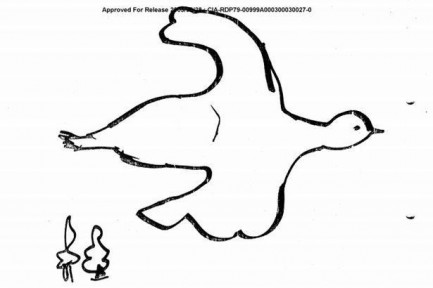  40,000 metal spoons. We aren't believers in psychic ability or any form of the paranormal. And we won't be unless we see evidence proving these realms exist. But the CIA said Geller was the real deal, so that's worth something. Of course, they also said Iraq had a nuclear weapons program, so maybe their opinion should be taken with a grain of salt. 40,000 metal spoons. We aren't believers in psychic ability or any form of the paranormal. And we won't be unless we see evidence proving these realms exist. But the CIA said Geller was the real deal, so that's worth something. Of course, they also said Iraq had a nuclear weapons program, so maybe their opinion should be taken with a grain of salt.

|
 |

The headlines that mattered yesteryear.
2003—Hope Dies
Film legend Bob Hope dies of pneumonia two months after celebrating his 100th birthday. 1945—Churchill Given the Sack
In spite of admiring Winston Churchill as a great wartime leader, Britons elect
Clement Attlee the nation's new prime minister in a sweeping victory for the Labour Party over the Conservatives. 1952—Evita Peron Dies
Eva Duarte de Peron, aka Evita, wife of the president of the Argentine Republic, dies from cancer at age 33. Evita had brought the working classes into a position of political power never witnessed before, but was hated by the nation's powerful military class. She is lain to rest in Milan, Italy in a secret grave under a nun's name, but is eventually returned to Argentina for reburial beside her husband in 1974. 1943—Mussolini Calls It Quits
Italian dictator Benito Mussolini steps down as head of the armed forces and the government. It soon becomes clear that Il Duce did not relinquish power voluntarily, but was forced to resign after former Fascist colleagues turned against him. He is later installed by Germany as leader of the Italian Social Republic in the north of the country, but is killed by partisans in 1945.
|

|
|

It's easy. We have an uploader that makes it a snap. Use it to submit your art, text, header, and subhead. Your post can be funny, serious, or anything in between, as long as it's vintage pulp. You'll get a byline and experience the fleeting pride of free authorship. We'll edit your post for typos, but the rest is up to you. Click here to give us your best shot.

|
|







































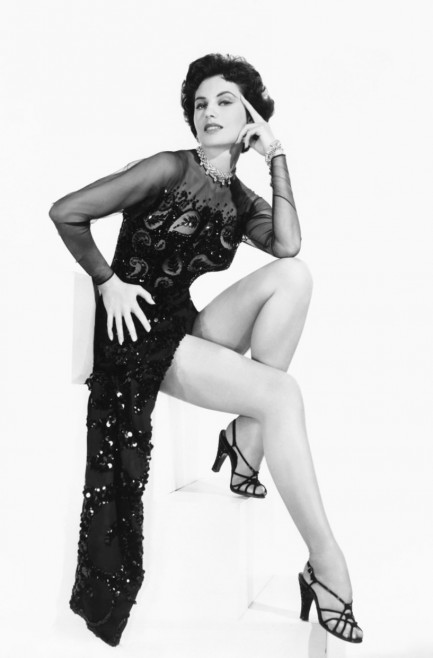












 This cool cover fronts the original Hebrew translation of Bram Stoker's Dracula. It looks vintage but it's actually from 1984. It was made from a promo image, as you see, with Bela Lugosi wearing a very hungry expression. Vampires crave blood, but this look must be for something even better, like one of those Israeli jelly donuts—sufganiyot they're called. They'd make anyone modify their diet. Luckily, Dracula wears a cape, which means he won't need a napkin to wipe the powdered sugar off his mouth. Pulp style art from Israel is hard to find, as you can probably imagine. Is this pulp style? We think so, kind of. Anyway, we've located a few things—for example, this cover for Psycho. We'll keep looking and share anything we find.
This cool cover fronts the original Hebrew translation of Bram Stoker's Dracula. It looks vintage but it's actually from 1984. It was made from a promo image, as you see, with Bela Lugosi wearing a very hungry expression. Vampires crave blood, but this look must be for something even better, like one of those Israeli jelly donuts—sufganiyot they're called. They'd make anyone modify their diet. Luckily, Dracula wears a cape, which means he won't need a napkin to wipe the powdered sugar off his mouth. Pulp style art from Israel is hard to find, as you can probably imagine. Is this pulp style? We think so, kind of. Anyway, we've located a few things—for example, this cover for Psycho. We'll keep looking and share anything we find.












 Through double blind experiments, one of which involved sealing Geller in a room, having a worker make a drawing, and asking Geller to recreate the drawing without having seen it. The images above and below show three of the original drawings, and Geller's eerily accurate renderings.
Through double blind experiments, one of which involved sealing Geller in a room, having a worker make a drawing, and asking Geller to recreate the drawing without having seen it. The images above and below show three of the original drawings, and Geller's eerily accurate renderings.
 40,000 metal spoons. We aren't believers in psychic ability or any form of the paranormal. And we won't be unless we see evidence proving these realms exist. But the CIA said Geller was the real deal, so that's worth something. Of course, they also said Iraq had a nuclear weapons program, so maybe their opinion should be taken with a grain of salt.
40,000 metal spoons. We aren't believers in psychic ability or any form of the paranormal. And we won't be unless we see evidence proving these realms exist. But the CIA said Geller was the real deal, so that's worth something. Of course, they also said Iraq had a nuclear weapons program, so maybe their opinion should be taken with a grain of salt.

